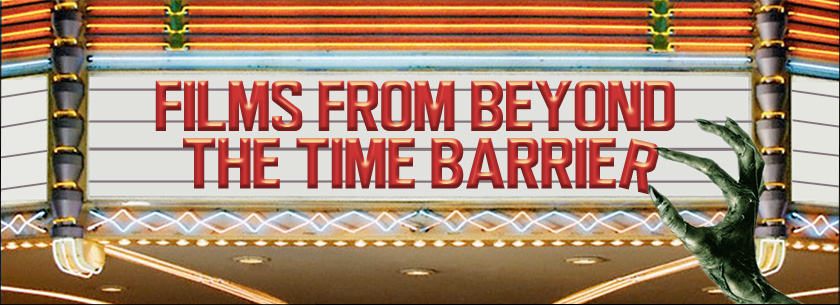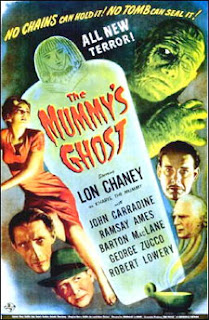Now Playing: Season of the Witch (aka Hungry Wives; 1972)
Pros: An original “indie” psychological horror film with a different spin on the discontents of suburban middle-class life; Imaginative, disturbing dream sequences
Cons: Too talky; The hip, amoral college instructor character is too contrived; Difficult to get past the dated, god-awful ‘70s clothes, make-up and slang
Pros: An original “indie” psychological horror film with a different spin on the discontents of suburban middle-class life; Imaginative, disturbing dream sequences
Cons: Too talky; The hip, amoral college instructor character is too contrived; Difficult to get past the dated, god-awful ‘70s clothes, make-up and slang
Spring is finally here. Time to shake off the heavy coat of ice and snow that Old Man Winter blasted at us this year. It’s the season for renewal, and for an explosion of Mother Nature’s favorite colors. It’s the season of the birds and the bees and… witches.
These days, witches are popularly associated with the dark arts, Devil worship and Halloween, but the Vernal Equinox is a very important date on their calendar for celebrating Ostara, the Goddess of Fertility and new beginnings. (And let's face it, Christianity and its Easter celebration is a johnny-come-lately to this rebirth-renewal thing -- kind of like a loud, obnoxious guest who comes late to the party, shoves all the Pagans aside, cranks up his own playlist, drinks all the good stuff, and then takes credit for saving the party.)
 |
| "Hey, have you heard this one? A goat, a witch, a priest and a rabbi walk into a bar..." |
While the 2,000 year-old ascendent paradigm has contributed much good to the world, it has also contributed crusades, pogroms, inquisitions and burnings at the stake. In the wrong hands, it seeks to separate humanity from the bosom of nature, and pretends that Man can dominate the natural world with no consequences. And in spite of the founder’s preference for the meek, the poor and the dispossessed, modern day adherents are often hard on those groups. So it’s no wonder that the dispossessed sometimes find alternatives that give them a greater sense of control and meaning in their lives. In some areas of the world it’s Voodoo. In others, it’s Santería. In still others, including George Romero’s late 20th century suburbia of discontent, it’s witchcraft. (Yes, that George Romero -- you didn’t think he just made zombie movies did you?)
The protagonist of Romero’s Season of the Witch, Joan Mitchell (Jan White) is herself dispossessed, in spite of living the early ‘70s dream of a nice house in the suburbs complete with a hard working husband and a smart, attractive teenage daughter.
She is dispossessed of any meaningful adult existence, spending her waking hours listening to her bored housewife friends complaining about their husbands at endless bridge games and cocktail parties. At night, her subconscious lays out the bland horror of her vacuous existence in surreal dreams.
 |
| Joan and creepy lamp-boy listen as the dream guide runs through the inventory of her vacuous existence. |
“[Checking his clipboard] Okay, Mitchell, Joan. Oh, you’ve been here before, but just for the record-- [gesturing around] dining room, kitchen… and through here the garage, sewing corner and books, all the latest… And televisions, 3 sets, in the den, in here and upstairs, with, uh, special programming designed to give you ideas… in case you should run out of ideas. And the ladies of course... [distorted, fish-eye closeups of her bridge friends dressed in hideous clothes and makeup] they’re available for luncheons, teas and bridge, et cetera, et cetera, et cetera…”News of a woman in the neighborhood, Marion Hamilton (Virginia Greenwald) who is a witch and gives tarot readings piques Joan’s interest. She and friend Shirley (an older, even more disenchanted woman played by Ann Muffly) decide to get readings. In spite of (or perhaps because of) Marion’s spot-on, yet bleak assessment of her friend’s cards, “Romantic love has failed you,” Joan seems all the more intrigued.
 | |
| Joan rehearses for the local community theater production of Bell, Book and Candle. |
Being a witch is apparently just what the (witch) doctor ordered. As she practices her incantations, she seems infused with new life. She even uses her new-found powers to compel her daughter’s insouciant hipster boyfriend Gregg (Raymond Laine), an instructor at the local college, to come to her (what the heck, daughter’s run away and hubby is gone on another extended business trip!)
But there’s a price to pay. As she gets deeper into the witchy arts with the help of mentor Marion, her surreal dreams turn even more menacing. A shadowy intruder in a grotesque over-the-head mask (an entity she’s inadvertently summoned? her own subconscious in disguise?) is stalking her nightmares. In her waking life, her newfound sense of freedom and power is taking her to the edge as she continues her affair with the amoral Gregg, whom she despises yet can’t seem to get enough of.
 |
| "Hey lady, that'll be $22.50 for the pizza. Lady?..." |
And the very last scene suggests that Joan won’t be the last suburban witch -- there are many more witches-in-the-making out there dying to break free of their stifling, middle-class suburban prisons.
Shot in and around Pittsburgh, PA with a cast of unknowns, Season of the Witch (originally released as Hungry Wives), was Romero’s third feature film. While superficially it’s a huge departure from his surprise hit Night of the Living Dead, the two films share an acerbic outlook on humanity and doses of black humor. Sadly, Season was plagued with production and money problems, and quickly sank into obscurity. According to Wikipedia, it’s the only film on his resume that he would like to remake.
 |
| Weaselly Gregg doesn't believe in witchcraft. |
Effectively irritating is Raymond Laine as Gregg, the weaselly college instructor who goes from romancing the teenage daughter to the mother without the slightest twinge of conscience. He’s arrogant and self-righteous, and more than a little cliched with his ‘70s hippie “do whatever feels good” philosophy. In a scene that goes on a little too long, he plays a cruel prank on Joan’s insecure friend Shirley, passing off a homemade “doobie” of regular tobacco as the the real thing.
If there’s a real star of Season, it’s Ann Muffly as Shirley Randolph. Shirley is vain, bored, anxious, depressed, and a borderline alcoholic -- in other words, a stereotypical ‘70s housewife. But Muffly brings surprising depth to what might have been a cardboard character. Her giddiness at taking a drag on what she thinks is her first joint, then her anxiety as she convinces herself she’s getting high is so authentic it’s difficult to watch. In another scene, she cries out to Joan that she’s “not done!” -- as in not done with life, no matter what her bridge friends or her slob of a husband say. In the hands of a contemporary filmmaker, Shirley would be a one-dimensional foil for the audience to laugh at. In Romero’s and Muffly’s hands, Shirley elicits a strong there-but-for-the-grace empathy.
 |
| Shirley is a two-fisted drinker. |
Don’t let the dated aspects deter you. The average contemporary horror fan will hate this -- it’s talky and murky and there’s no gore. But I know you my friend. You’re mature, intelligent and discriminating, and will appreciate this lost George Romero near-classic for what it is-- a solid film of psychological suspense, with some memorable moments of biting satire, black humor, and surprisingly good performances from unknown actors.
Where to find it:
Amazon Instant Video
"They are all hungry wives with an appetite for diversion... gambling with life and death!"








